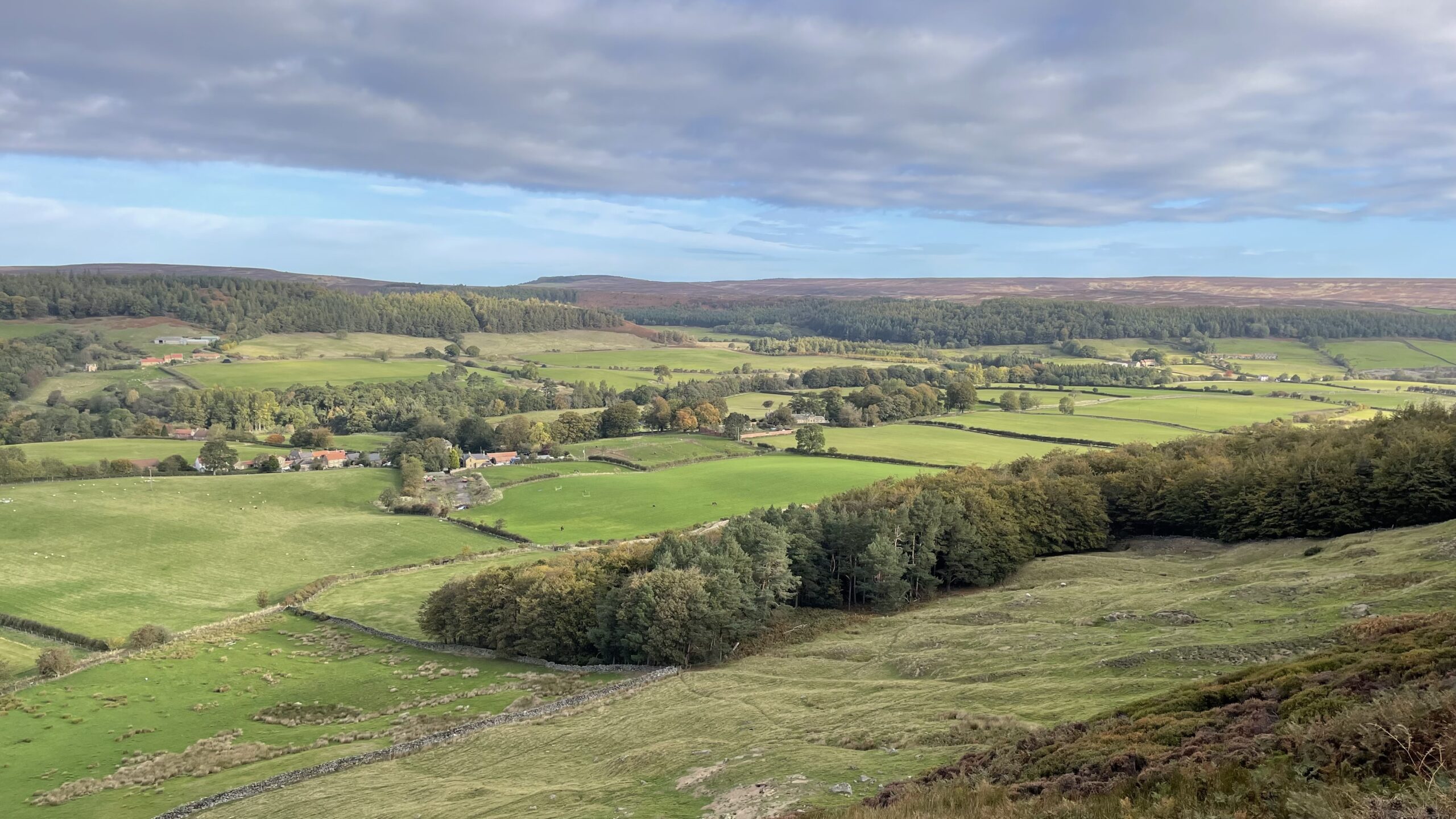Hidden behind the trees to the left in the photo stands St Cuthbert’s Church, its quiet stones guarding secrets far older than the building itself. During construction in the 19th century, workmen uncovered a remarkable find: several Viking graves, complete with swords and traders’ weighing scales. The discovery hinted that Kildale was once far more than a remote dale—it was a settlement of standing, perhaps astride an ancient trade route. Could one of those warriors have been Killi, the Norseman whose name still lingers in “Kildale”?
St Cuthbert, the saint to whom the church is dedicated, began as a monk on Lindisfarne, later retreating to the solitude of the Farne Islands. After his death, his body became a relic on the move. When the Danes seized Lindisfarne in 875, his fellow monks fled with the coffin, wandering for seven years before finding sanctuary in Durham. Legend holds that churches were founded wherever Cuthbert’s body rested along the way. Kildale’s is the only such church in the North York Moors.
When the Normans arrived, Kildale passed into the hands of Robert de Brus, who may have built the motte and bailey castle still faintly visible on the landscape. The name “Childale” appears in the Domesday Book, and in time the estate came to a branch of the powerful Percy family.
By the 17th century, the Turners, prosperous merchants, bought Kildale and its neighbour Westerdale from the Earl of Northumberland. But fortune fades: Sir Charles Turner was forced to sell both estates in 1806 to settle his debts. In 1870, they were bought by Robert Bell Livesey of Thirsk.
Though today Kildale slumbers in the shadow of the Cleveland Hills, it once thrived beside the turnpike road from Stokesley to Whitby. There was a school, a post office, an inn—all now private homes. The railway’s arrival in 1861 brought a brief rush of ironstone mining and quarrying before the valley slipped back into its enduring silence.

Leave a Reply